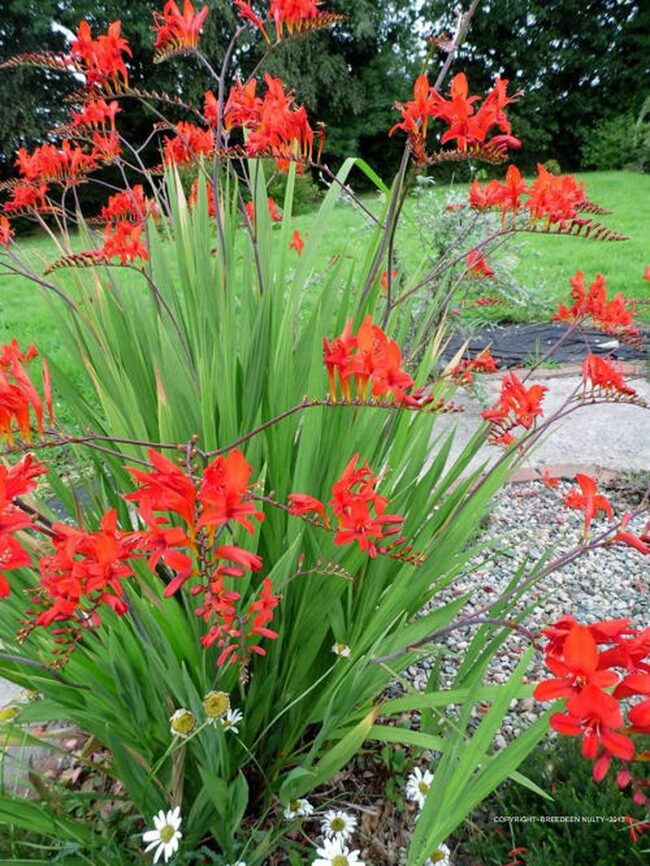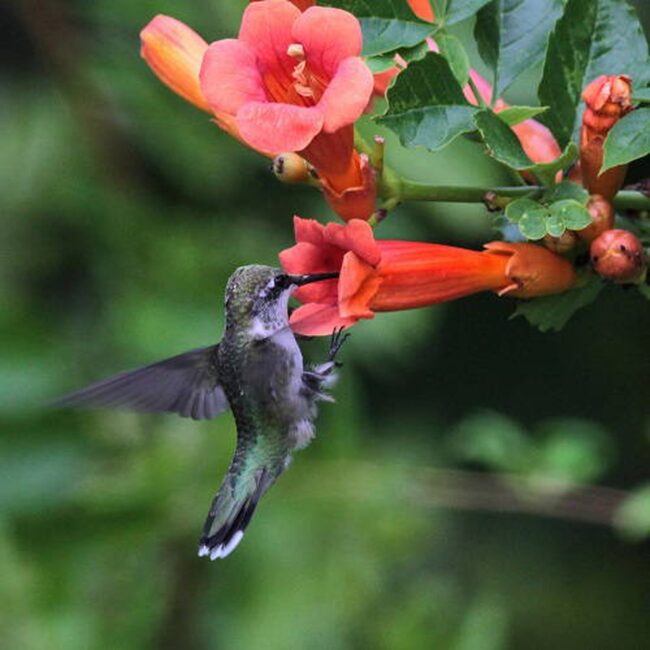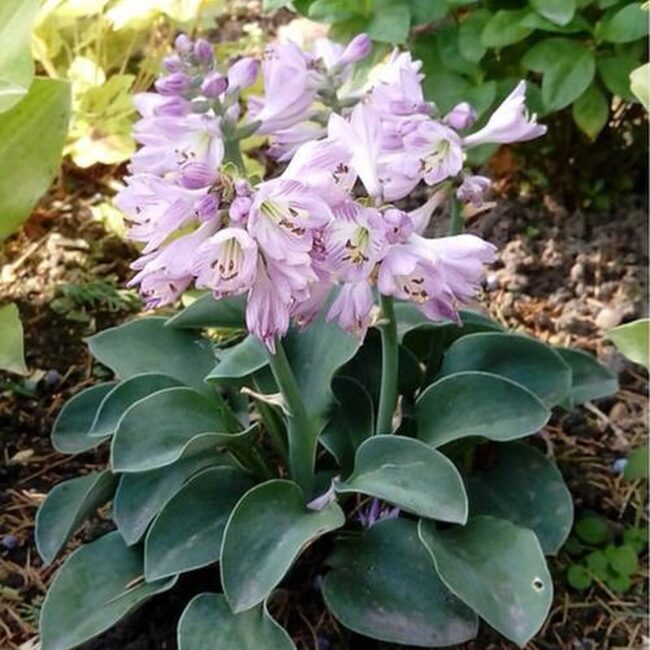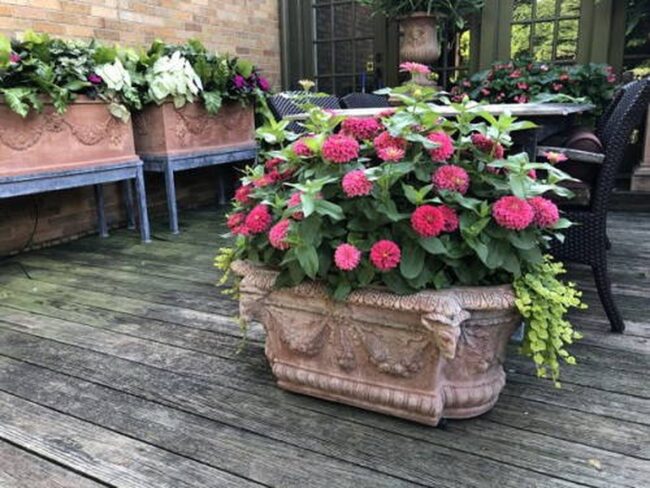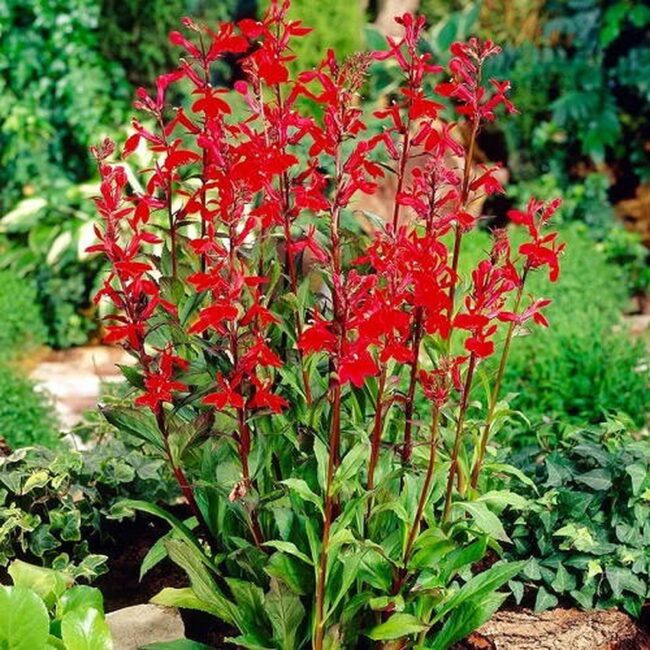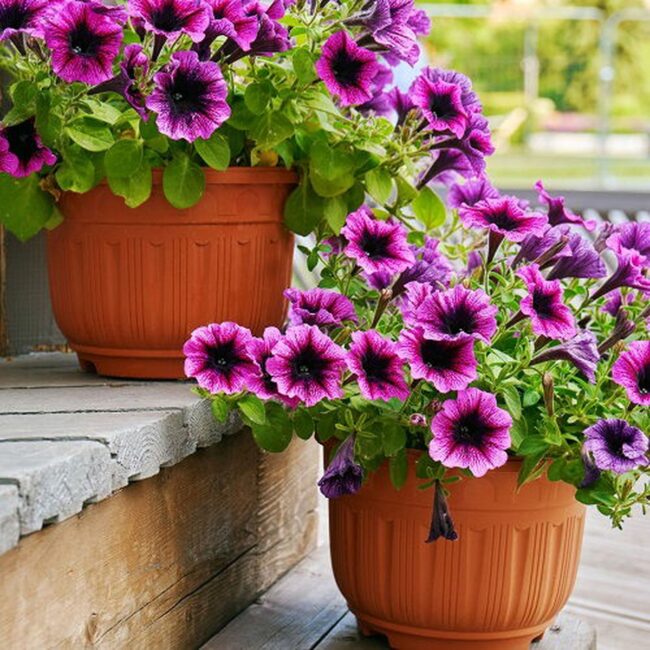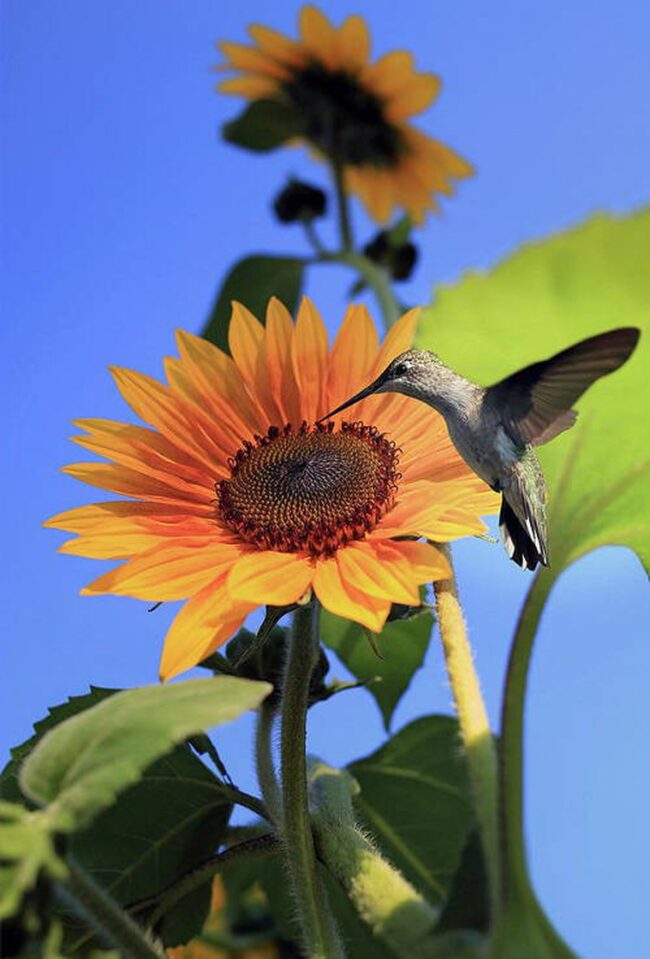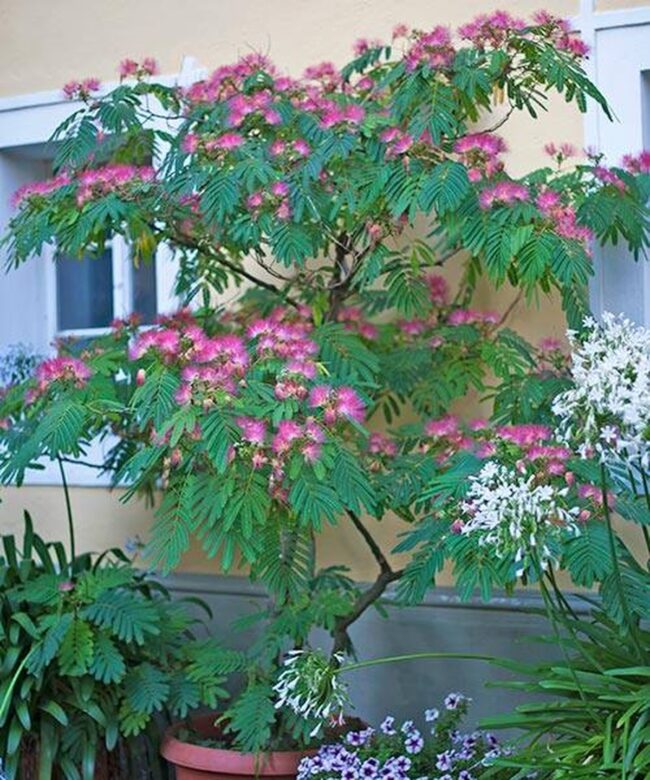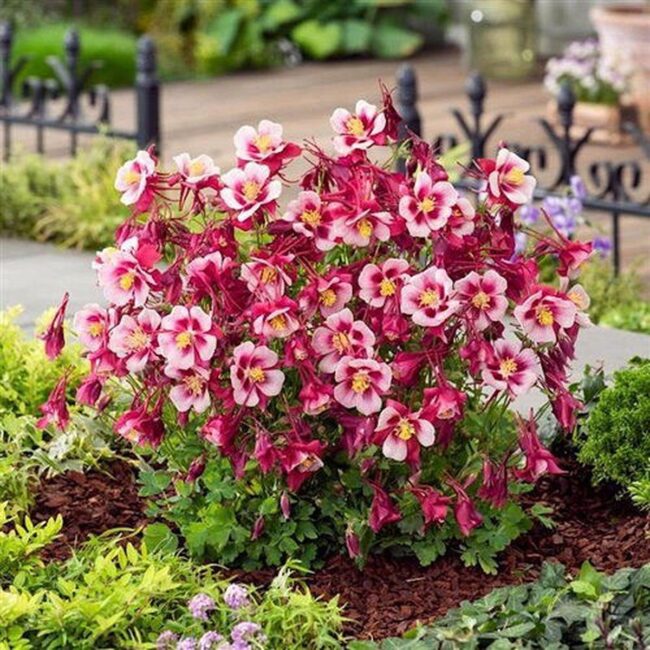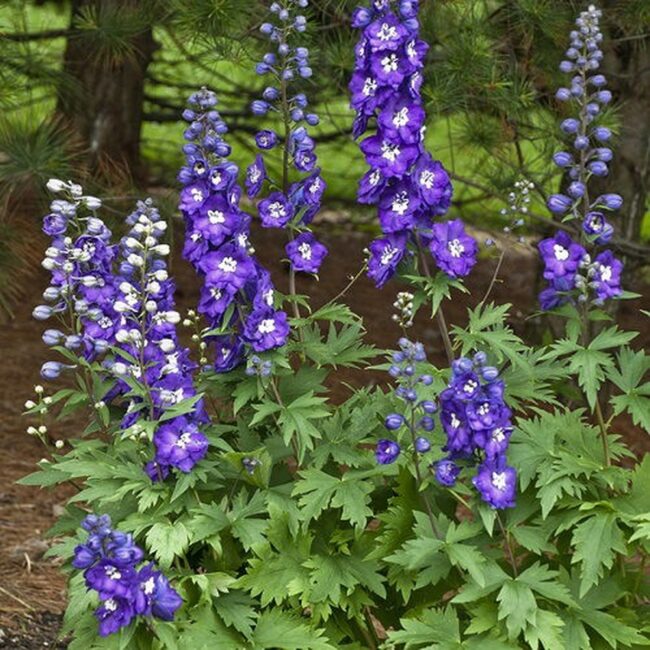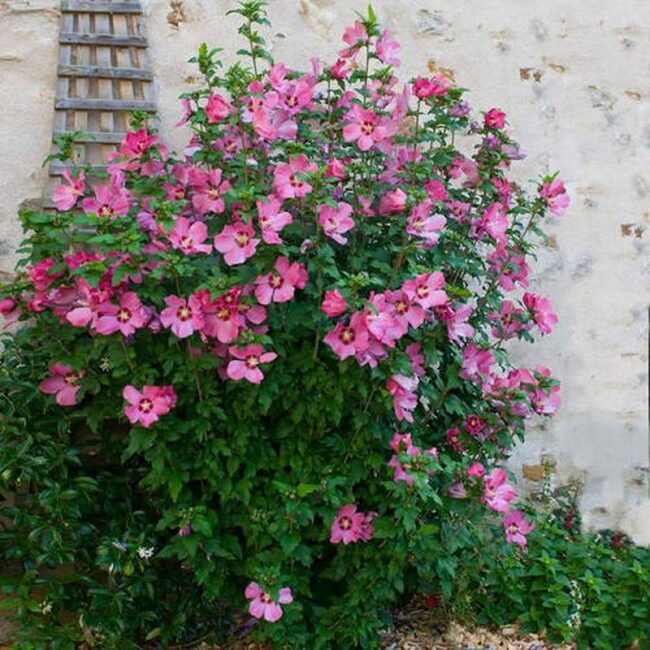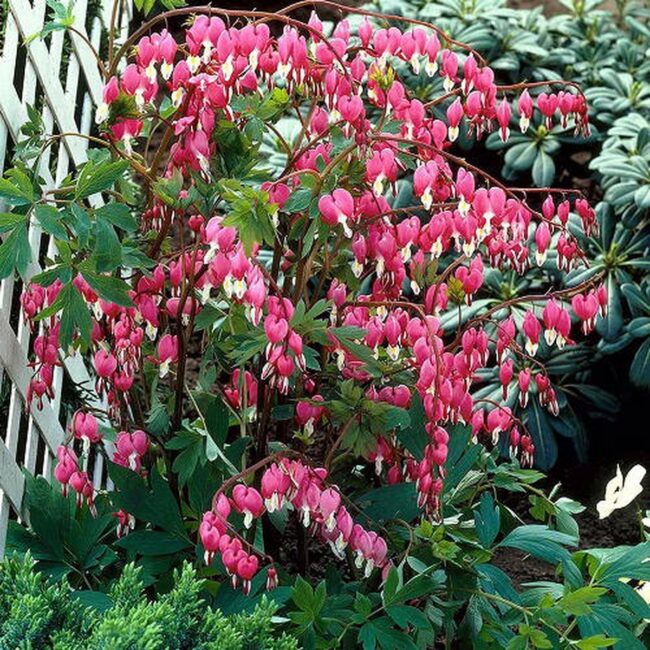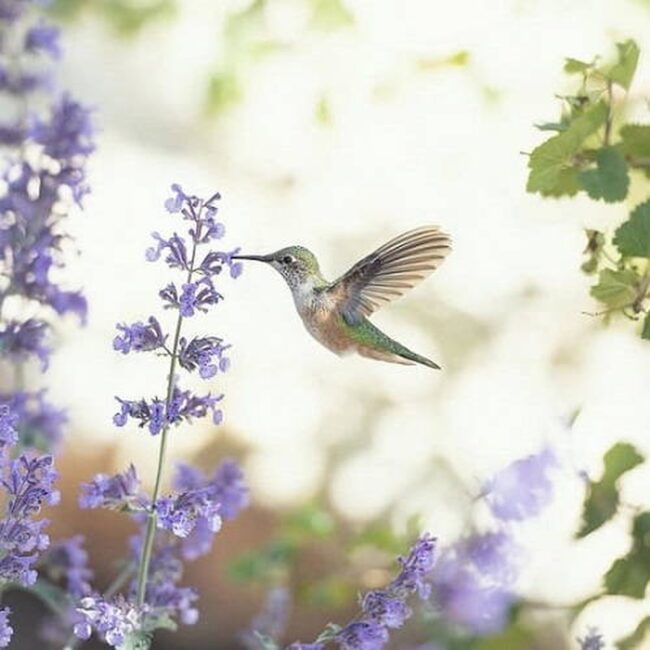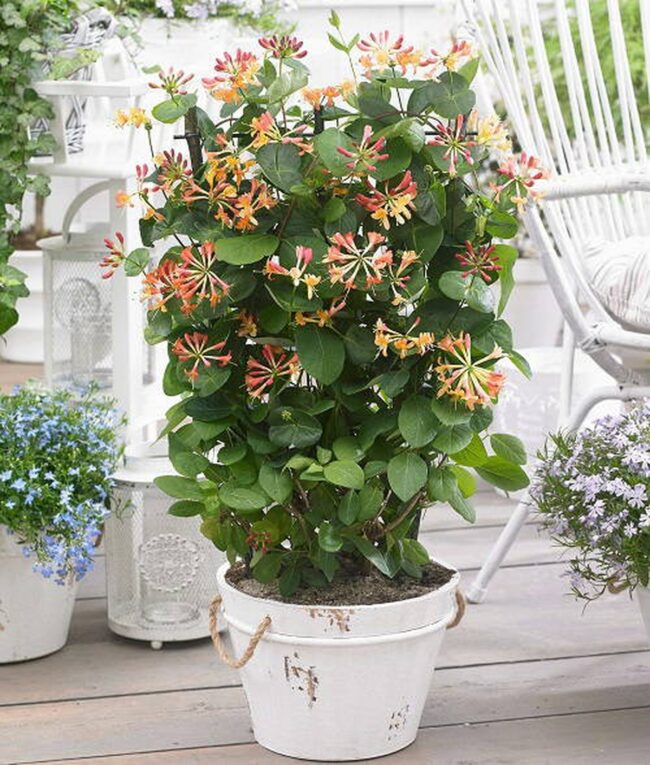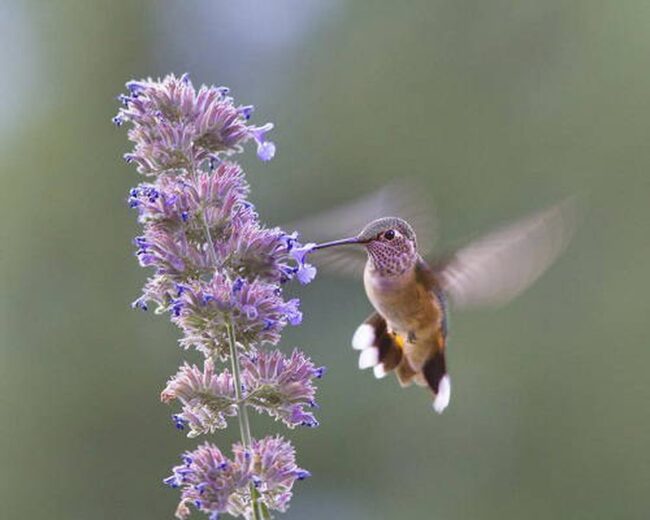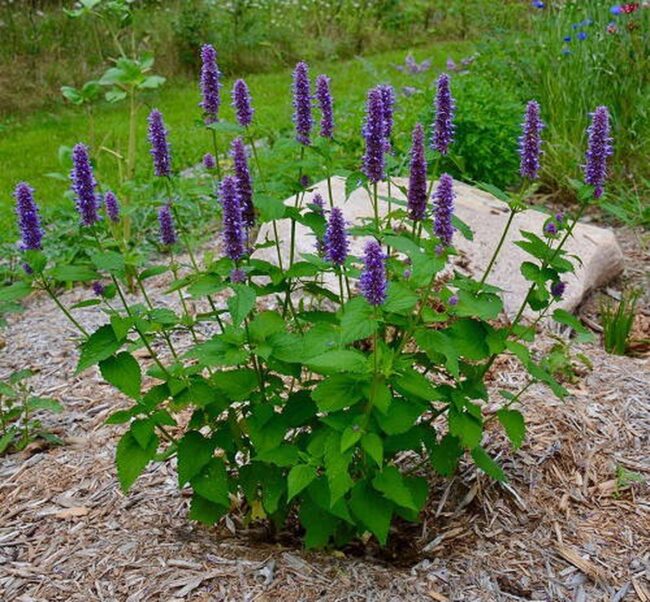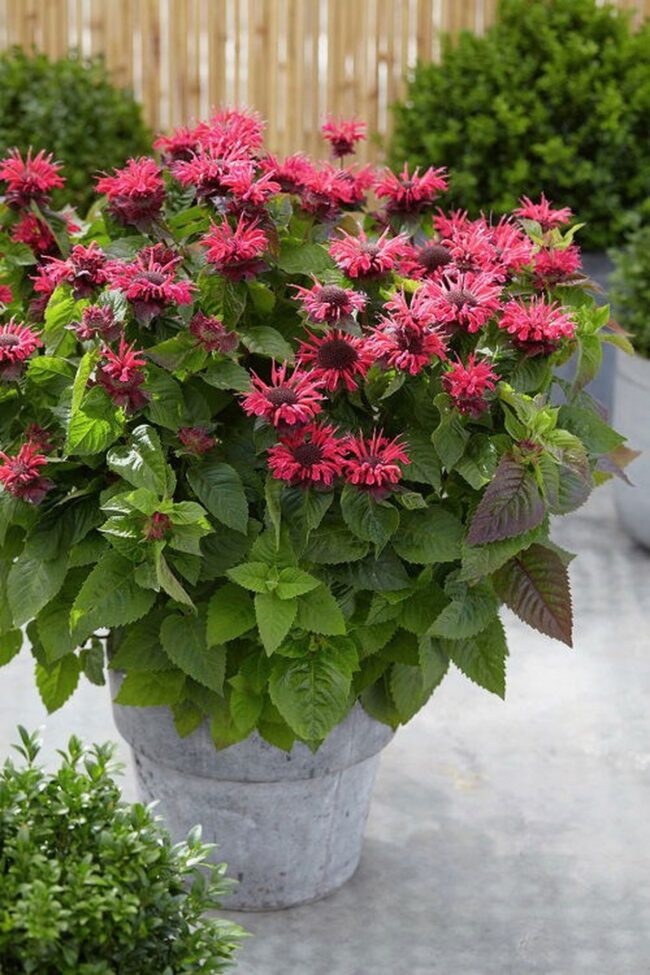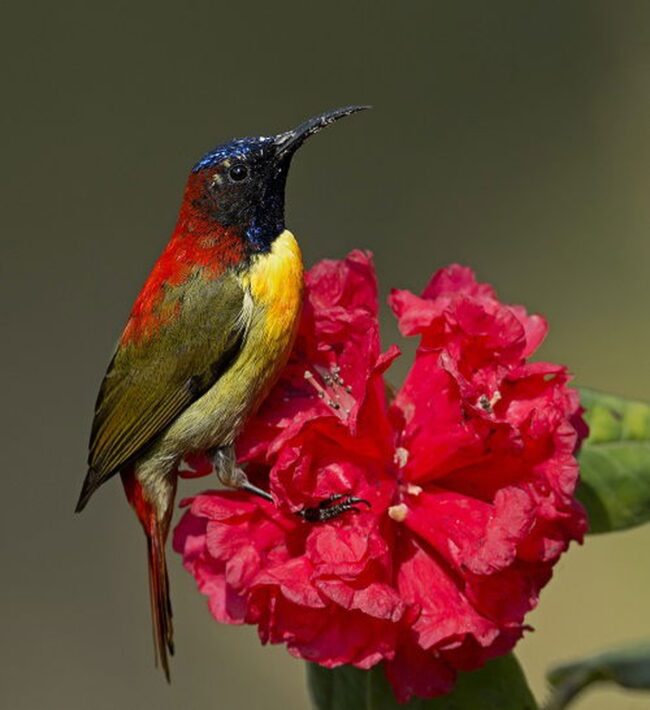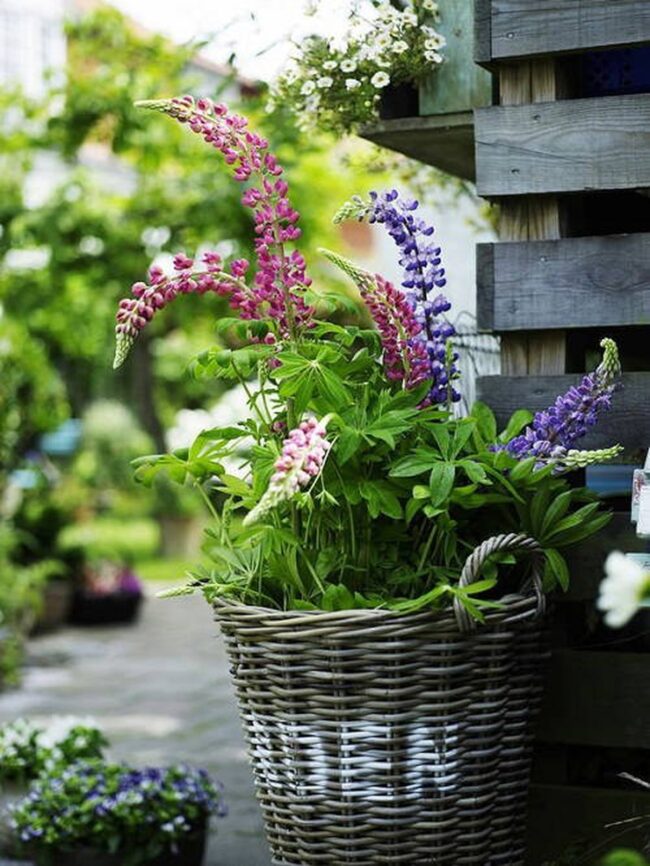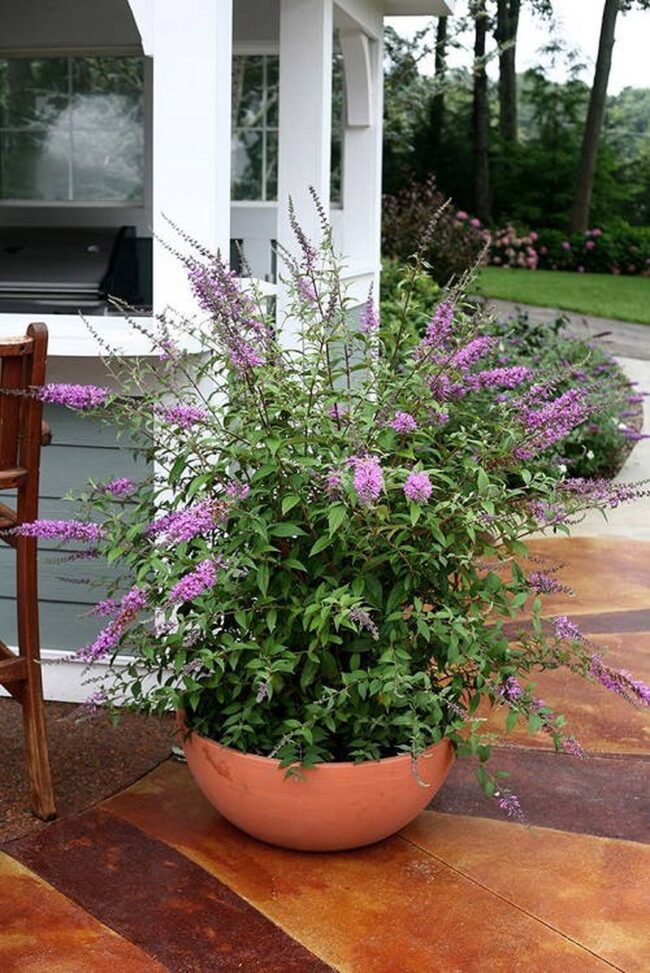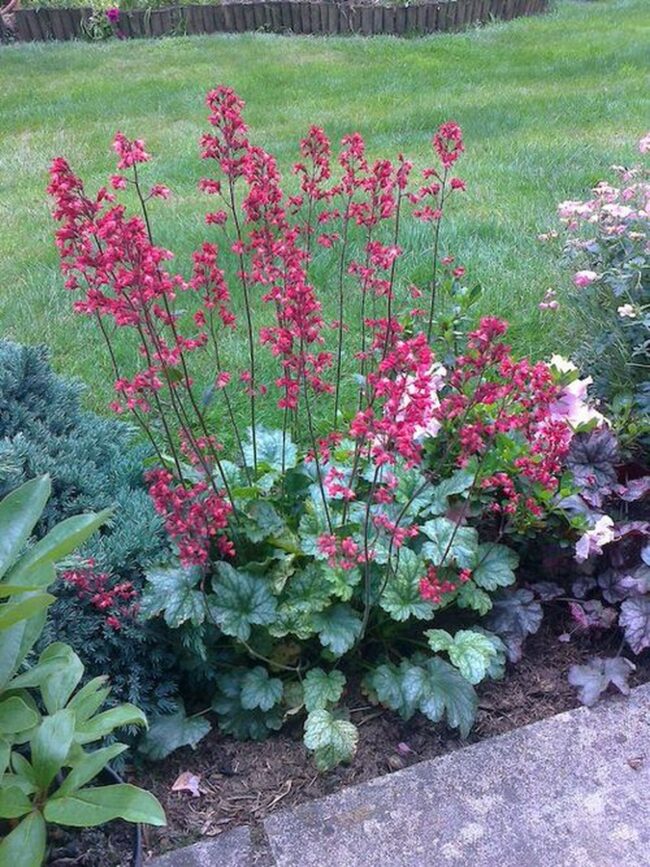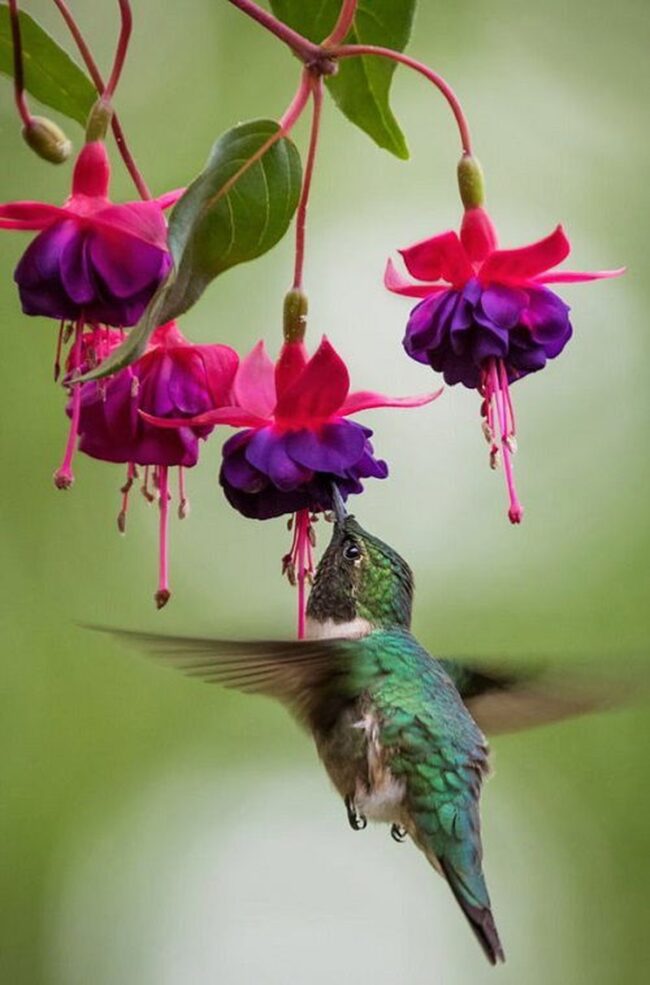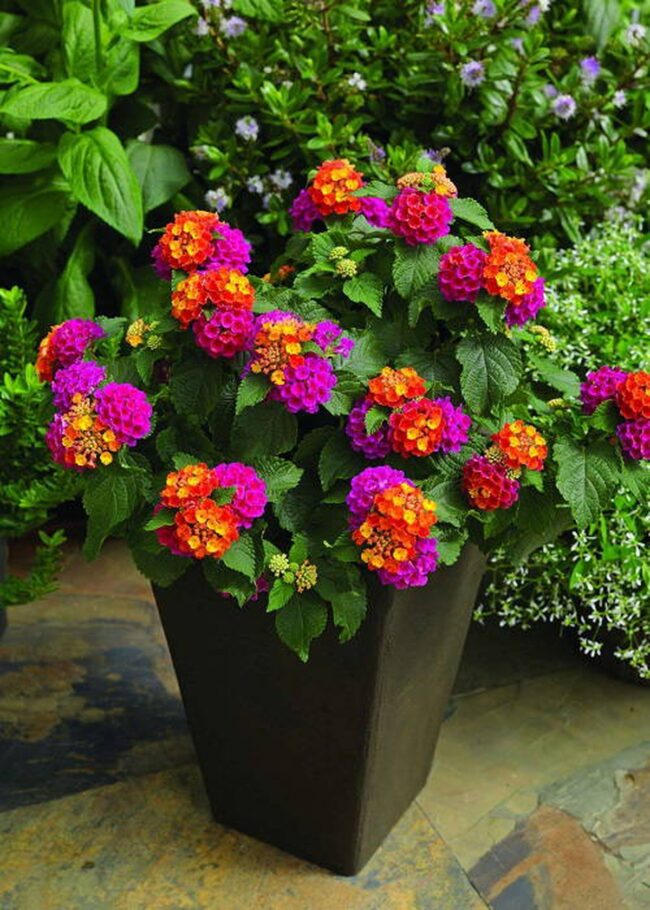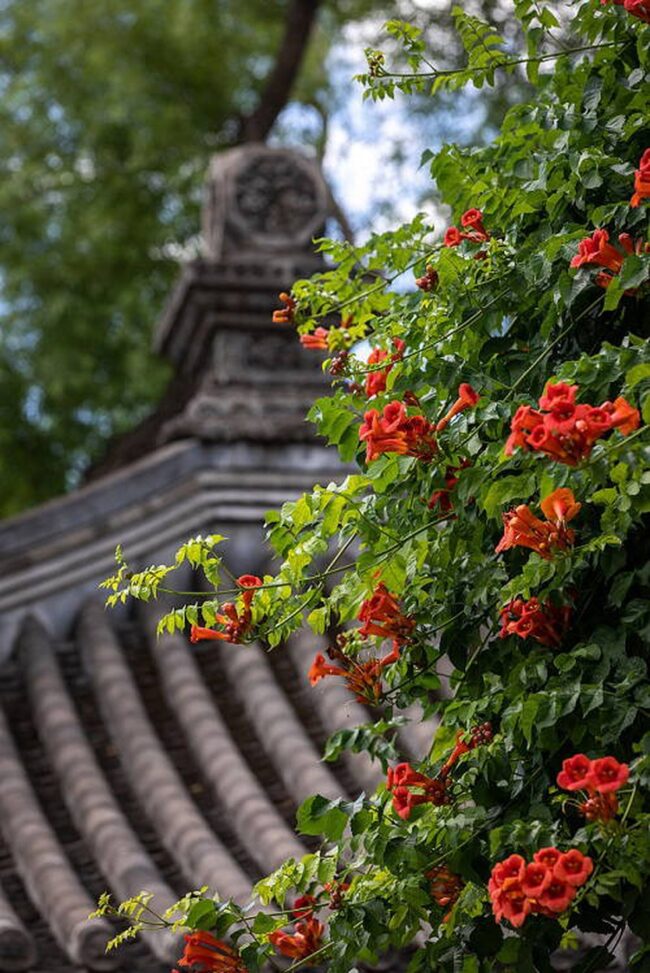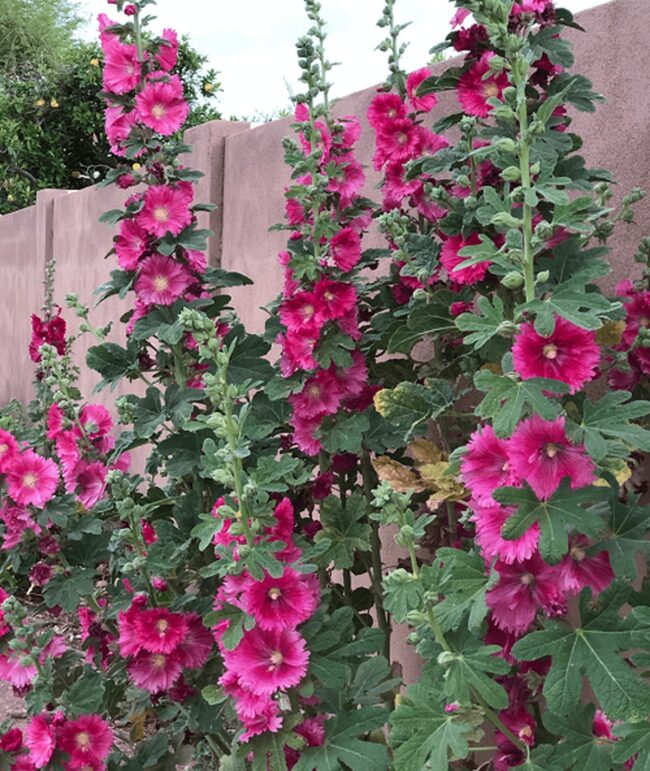27 Beautiful Plants That Attract Hummingbirds to Your Garden
Plants that attract hummingbirds add a splash of life and color to any garden.
These special flowers create a welcoming space for tiny, vibrant birds with their bright hues and sweet nectar.
Gardens filled with hummingbird-friendly plants often feel lively and magical as these little creatures dart gracefully from bloom to bloom.
The natural charm of such plants can brighten outdoor spaces while supporting local wildlife.
Hummingbird-attracting flowers usually have shapes and scents that perfectly suit these winged visitors.
They thrive in sunny spots and bring a touch of nature’s wonder close to home.
Watching hummingbirds around these plants can be a joyful experience for gardeners of all ages.
Phlox
Phlox are spectacular summer bloomers that draw hummingbirds like magic to garden spaces with their clusters of sweet-scented flowers.
Native to North America, phlox thrive in sunny spots with well-draining soil and moderate moisture.
These hardy plants grow between two to four feet tall, creating beautiful mid-height garden borders.
Clusters of small star-shaped blossoms emerge in mid-summer, providing nectar-rich feeding stations for hungry hummingbirds.
Multiple color varieties ensure your garden stays lively and attractive throughout the flowering season.
Phlox work wonderfully in cottage-style landscapes or mixed perennial beds.
Flower clusters continue blooming for several weeks, giving continuous visual interest and pollinator support.
Crocosmia ‘Lucifer’
Crocosmia 'lucifer' is a magnet for hummingbirds with its fiery red and orange blooms that sway gracefully in summer gardens.
Native to South Africa, this perennial produces sword-shaped leaves and arching stems packed with tubular flowers.
Plants thrive in well-draining soil and prefer full sun to partial shade conditions.
Zones 5-9 work best for establishing these dramatic landscape performers.
Hummingbirds can't resist the brilliant red clusters hanging like delicate flames along the plant's slender stems.
Summer months bring the most spectacular display of color and wildlife attraction.
Propagating through corms ensures gardeners can expand their hummingbird-friendly spaces with ease.
Trumpet Vine
Trumpet vine blooms with fiery reddish-orange flowers that beckon hummingbirds like a magical nectar beacon.
Wild and enthusiastic growth patterns make this vine a double-edged landscape companion.
Container planting helps control its spreading tendencies for smaller spaces.
Hummingbirds cannot resist the long, trumpet-shaped flowers dangling from lush green foliage.
Sunlight brings out the most intense colors in these dramatic plant clusters.
Native to North America, this vine provides a natural feeding station for tiny winged visitors.
Careful placement ensures you enjoy spectacular hummingbird interactions without overwhelming your garden design.
Hosta
Hostas provide lush green leaves with dramatic color variations that attract hummingbirds seeking nectar.
These shade-loving perennials thrive in garden spaces where other plants struggle to grow.
Hosta varieties range from miniature to giant sizes, ensuring gardeners can find perfect options for different landscape designs.
Delicate flower spikes emerge during summer, drawing tiny hummingbirds with subtle purple or white blooms.
Woodland gardens benefit most from these resilient plants that tolerate limited sunlight conditions.
Nurseries stock numerous cultivars with varied leaf colors and textures, making selection easy for plant lovers.
Zinnia
Zinnias burst with colorful blooms that magnetically draw hummingbirds throughout late summer and early fall migration seasons.
These cheerful flowers provide perfect nectar sources for tiny winged visitors seeking quick energy replenishment.
Seeds germinate quickly in warm soil with full sun exposure.
Brilliant red, orange, pink, and purple varieties appear most attractive to hungry hummingbirds.
Compact and tall zinnia varieties work equally well in garden beds or containers.
Summer-long blooming cycles ensure consistent hummingbird interactions and visual garden enjoyment.
Cardinal Flower
Cardinal flower magnetically pulls hummingbirds with its intense scarlet blooms loaded with sweet nectar.
Native woodland gardens sparkle when these dramatic red flowers emerge along stream edges and wet meadows.
Tall flower spikes reach up to four feet high, creating dramatic vertical garden elements.
Perennial lobelia cardinalis grows best in partial shade with consistently moist soil conditions.
Rich crimson blossoms cluster densely along elegant stems during mid to late summer.
Pollinators swarm these bright red tubular flowers like tiny flying jewels.
Native North American wildflowers make perfect landscape additions for ecological landscaping.
Petunia
Petunias burst with colorful trumpet-shaped blooms that magnetize hummingbirds to garden spaces.
These low-maintenance flowers thrive in containers and garden beds with minimal effort.
Sunlight fuels their vibrant growth, producing blossoms in white, pink, red, purple, and blue hues.
Hummingbirds cannot resist their open flower shapes and nectar-rich centers.
Small pots or large garden plots work perfectly for these adaptable plants.
Summer brings continuous flowering that keeps these tiny winged visitors returning.
Sunflower
Sunflowers radiate irresistible charm for hummingbirds with their generous nectar-packed centers.
Tall stalks reach skyward, creating perfect perches for these tiny winged visitors.
Massive golden petals surround dark brown seed heads that beckon hungry hummingbirds from miles around.
Native to North America, sunflowers thrive in full sun and well-draining soil with minimal fuss.
Small flowers clustered near the center provide ideal sipping spots for tiny hummingbird beaks.
Large varieties can grow over six feet tall, making dramatic landscape statements.
Compact cultivars work beautifully in smaller garden spaces, ensuring everyone can enjoy these pollinator magnets.
Silk Tree
Silk tree offers an irresistible nectar feast for hummingbirds seeking garden refreshment.
Native to China, this exotic pea family member blooms soft pink flowers that shimmer like delicate silk fans.
Fragrant blossoms dangle from branches, creating a sweet hummingbird magnet in summer landscapes.
Birds dart and hover around its feathery blooms, sipping nectar with rapid wing beats.
Its graceful branches spread wide, providing both food and shelter for tiny winged visitors.
Hummingbirds particularly enjoy the tree's abundant flowering season from late spring through summer.
Light pruning helps maintain its elegant shape while encouraging more nectar-rich flower production.
Columbine
Columbine flowers rocket hummingbird attraction with graceful spurred blossoms in mesmerizing blue, purple, and pink hues.
Native garden spaces welcome these delicate woodland perennials that dance beautifully between rocks and shade gardens.
Pollinators especially love the intricate flower shapes hanging like delicate bells from slender stems.
Aquilegia species grow easily across multiple hardiness zones with minimal maintenance requirements.
Shade-loving perennials spread gently through self-seeding, creating charming natural clusters in woodland settings.
Most varieties reach 1-3 feet tall, providing perfect mid-height garden coverage.
Hummingbirds zoom toward these nectar-rich flowers from early spring through summer, making columbine a must-have for wildlife-friendly landscapes.
Snapdragon
Snapdragons are whimsical flowers that fascinate hummingbirds with their unique mouth-like blossoms.
Small birds squeeze these playful blooms to release hidden nectar tucked deep inside their petals.
These charming plants come in multiple color varieties ranging from soft pastels to rich jewel tones.
Compact and easy to grow, snapdragons thrive in sunny garden spots with well-draining soil.
Hummingbirds cannot resist their specially structured flowers that act like little traps waiting to spring open.
Seed planting works best in spring for summer-long blooming that keeps hummingbirds returning throughout the season.
Delphinium
Delphinium flowers magically attract hummingbirds with their tall spikes of deep blue, purple, and white blossoms.
Native gardeners cherish these elegant perennials for their dramatic vertical presence in flower beds.
Summer sunlight brings these plants to life, reaching impressive heights of 3-6 feet.
Cool mountain regions provide the perfect growing conditions for delphiniums, which thrive in zones 2-9.
Pollinators especially appreciate the long, tubular flower shapes that match their feeding style perfectly.
Careful placement in full sun ensures robust growth and abundant blooming.
Hummingbirds will dance from spike to spike, drawn by the delphinium's irresistible nectar-rich blossoms.
Rose of Sharon
Rose of sharon provides spectacular late-summer nectar for hungry hummingbirds seeking floral feasts.
Gorgeous blooms in pink, blue, white, and red cover this hardy shrub from midsummer through early autumn.
Hummingbirds dart between delicate flowers, sipping sweet nectar from multiple blossoms.
Gardens with Rose of Sharon become buzzing havens for these tiny feathered friends.
Compact shrubs reaching 8-10 feet tall make perfect backyard perches for small birds.
Mature plants spread 4-6 feet wide, creating ideal landing spots for nectar-hunting hummingbirds.
Hibiscus syriacus thrives in full sun and tolerates various soil conditions.
Bleeding Hearts
Bleeding hearts enchant hummingbirds with their distinctive pendulous blossoms hanging like delicate jewelry.
Graceful heart-shaped flowers in soft pink and white dangle from elegant stems, creating an irresistible nectar station for these tiny birds.
Woodland gardens welcome these charming perennials that thrive in partial shade and moist environments.
Native to eastern Asia, bleeding hearts bloom during spring and early summer, providing critical sustenance for migrating hummingbirds.
Lamprocapnos species flourish in rich, well-draining soil and prefer cooler climates.
Perennial plants reach approximately 2-3 feet tall, forming beautiful clusters of drooping blossoms.
Shade-loving bleeding hearts transform garden spaces into magical hummingbird havens with minimal maintenance.
Salvia
Salvia are sensational nectar-rich plants that draw hummingbirds with their towering flower spikes in deep blue and purple shades.
Slender stems rise elegantly above other garden plantings, creating irresistible landing zones for tiny winged visitors.
Hummingbirds dart between the tubular blossoms, sipping sweet nectar with remarkable precision.
Landscapers select salvias for their reliable performance in full sun locations.
Pollinators appreciate the abundant flowering that extends through mid to late summer seasons.
Multiple salvia varieties ensure colorful options for different garden designs and regional growing conditions.
Honeysuckle
Honeysuckle are delightful climbing vines that bring magic to gardens with their vibrant scarlet blossoms.
Native to multiple regions, these plants thrive in sunny spots across USDA Zones 3-9.
Vines spread quickly along fences, trellises, and garden structures with minimal maintenance.
Different varieties range from deep red to soft pink, providing visual interest throughout summer months.
These hardy plants adapt well to various soil conditions and require moderate watering.
Honeysuckle transforms outdoor spaces into buzzing havens for tiny, energetic pollinators.
Catmint
Catmint provides extraordinary nectar-rich blooms that magnetize hummingbirds with lavender-blue clusters dancing above silvery green leaves.
Perennial herbs spread beautifully along garden borders and walkways, creating charming landscape elements.
Deer naturally avoid these fragrant plants, making them perfect for challenging landscapes.
Hardy varieties thrive in full sun and tolerate partial shade without losing vigor.
Small flowers continuously bloom through summer, ensuring consistent hummingbird traffic near your outdoor spaces.
Pollinators especially appreciate these compact, drought-resistant herbs nestled between other garden plants.
Agastache
Agastache bursts with tubular blooms that draw hummingbirds like a magnet to nectar-rich gardens.
Purple, pink, and orange flower spikes rise above green foliage, creating perfect perches for tiny winged visitors.
Drought-resistant and sun-loving, this plant thrives in rocky or sandy soil with minimal water requirements.
Native to southwestern United States and Mexico, agastache provides essential food sources for migrating hummingbirds during summer months.
Compact varieties grow well in containers, while larger types make striking back garden additions.
Hummingbirds navigate toward these long, slender flower clusters with remarkable precision.
Reliable and beautiful, agastache ensures your garden becomes a buzzing hummingbird sanctuary.
Bee Balm
Bee balm electrifies hummingbird gardens with spectacular tubular flowers bursting in rich red, purple, and pink shades.
Native wildflowers blossom in dense clusters atop sturdy stems during summer months.
Monarda plants thrive in sunny spots with moist, well-draining soil conditions.
Flowering spikes reach heights between two and four feet, creating dramatic visual interest.
Robust and low-maintenance, bee balm naturalizes easily in woodland and meadow garden settings.
Pollinators swarm these gorgeous flowers from mid-summer through early autumn.
Hummingbirds cannot resist the nectar-rich blossoms that provide essential energy during migration seasons.
Rhododendron
Rhododendrons attract hummingbirds with their stunning spring clusters of colorful blossoms that range from deep pink to pure white.
Shrubs perform best in partial shade within USDA Zones 4-8, creating perfect hummingbird havens.
Mature plants can reach impressive sizes between 4-6 feet tall, making dramatic landscape statements.
Dense foliage offers excellent protection for small birds seeking shelter near nectar sources.
Compact varieties work wonderfully in smaller garden spaces, while larger specimens create stunning woodland backdrops.
Mountain and woodland regions provide ideal growing conditions for these spectacular flowering shrubs.
Hummingbirds absolutely cannot resist the abundant nectar-rich blooms that emerge during spring months.
Lupine
Lupine flowers bring magical morning color combinations that draw hummingbirds into garden spaces with exceptional charm.
Blue, purple, white, pink, and yellow petals create a spectacular sunrise display for tiny winged visitors.
North American wildflowers pack serious pollinator appeal with their elegant vertical spikes.
These perennial plants thrive in sunny spots with well-draining soil conditions.
Native wildflower species attract multiple hummingbird species throughout early morning hours.
Lupine seeds grow easily in moderate climates with consistent moisture and partial sun exposure.
Butterfly Bush
Butterfly bush magically draws hummingbirds with long clusters of purple, pink, and blue blossoms blooming from mid-summer through fall.
Nectar-rich flowers serve as a perfect landing spot for these tiny winged visitors searching for sweet meals.
Butterflies also adore these spectacular flower spikes, making the plant a double-duty garden attraction.
Buddleja grows easily in sunny locations with well-draining soil, requiring minimal maintenance for maximum beauty.
Compact varieties work wonderfully in smaller spaces, while larger bushes create dramatic landscape statements.
Experienced bird watchers recommend planting multiple bushes to increase hummingbird traffic in your garden.
Mature plants reach heights between 5-10 feet, providing excellent perching and feeding opportunities for these delightful aerial acrobats.
Coral Bells
Coral bells emerge as delicate nectar magnets that attract hummingbirds with their subtle charm.
Small clusters of tiny bell-shaped flowers hang above mounded foliage in stunning color variations.
Rich burgundy, lime green, and silver leaf colors make these plants stand out in shaded garden areas.
Hummingbirds hover near their slender flower spikes during summer blooming periods.
Native to North American woodlands, Coral Bells thrive in partial shade with well-draining soil conditions.
Zones 4-9 provide ideal environments for these low-maintenance plants.
Perennial borders benefit from their graceful presence and ability to draw tiny winged pollinators.
Fuchsia
Fuchsias are dramatic pendulum-like flowers that entice hummingbirds with their elegant hanging blooms.
Summer brings spectacular color combinations of violet, red, purple, pink, and white petals that dance in sunlight.
Hummingbirds cannot resist the tubular flower shapes perfectly designed for their long beaks.
Shaded areas work best for these delicate plants, which prefer indirect sunlight and consistent moisture.
Compact shrub varieties ensure beautiful displays even in smaller garden spaces.
Consistent care helps fuchsias produce continuous blooms that attract these charming winged visitors throughout the growing season.
Lantana
Lantana are flowering shrubs packed with color and hummingbird-attracting nectar that bloom through summer and fall.
Small flower clusters emerge in tight bunches, creating irresistible landing spots for hungry hummingbirds seeking sweet energy.
Native to tropical regions of the Americas, lantana thrive in full sun and tolerate heat with remarkable resilience.
Drought-resistant stems produce continuous blossoms that draw pollinators from far and wide.
Hummingbirds dart between these blossoms, sipping nectar and adding dynamic movement to garden spaces.
Weekend gardeners appreciate lantana for their low-maintenance personality and ability to flourish in containers or garden beds.
Landscapers recommend planting lantana in groups to maximize their visual impact and pollinator attraction.
Trumpet Creeper
Trumpet creeper buzzes with hummingbird-magnet powers that gardeners love for their wildlife-friendly landscapes.
Vibrant orange, red, and yellow tubular blossoms hang in clusters along dense green foliage.
Native woodland vines spread quickly across fences, trellises, and garden walls with wild enthusiasm.
Nectar-rich flowers create irresistible feeding stations for tiny winged visitors throughout summer months.
Hummingbirds dart between trumpet-shaped blooms, sipping sweet liquid from deep flower pockets.
Robust climbing vines grow rapidly in full sun and well-draining soil conditions.
Wild landscapes bloom with energy when trumpet creepers establish their dramatic presence.
Hollyhocks
Hollyhocks bloom with large, colorful trumpet-shaped flowers that magnetically draw hummingbirds into garden spaces.
Tall stalks reach high with multiple blossoms in pink, red, white, and yellow hues.
Native to Europe and Asia, these perennial plants thrive in full sunlight and well-draining soil conditions.
Hummingbirds find their open flower structures perfect for sipping nectar with long, slender beaks.
Planting hollyhocks near other nectar-rich plants creates an inviting sanctuary for these delicate winged visitors.
Clusters of flowers along sturdy stems provide consistent feeding opportunities throughout summer months.
Experienced gardeners recommend placing hollyhocks in sheltered locations with adequate morning sun and afternoon shade.


